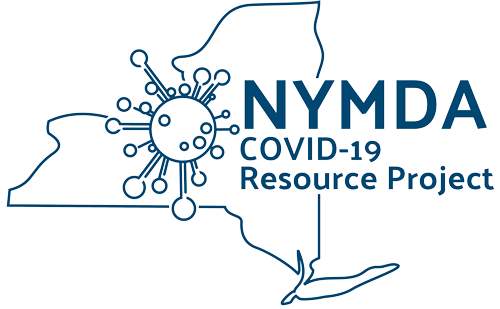Surveillance
In an effort to mitigate the transmission of infectious diseases, the NYMDA COVID-19 Resource Project is committed to providing guidance to facilities regarding surveillance protocols in nursing homes. It is imperative to establish a team of qualified individuals to oversee infection control measures, implement robust communication plans, and remain vigilant about recognizing the signs and symptoms commonly associated with respiratory infections.

Responsibility
Assign one or more individuals with training in Infection Prevention and Control (IPC) to provide on-site management of the IPC program.
IPC should be a full-time role for at least one person in facilities that have more than 100 residents or that provide on-site ventilator or hemodialysis services. Smaller facilities should consider staffing the IPC program based on the resident population and facility service needs identified in an IPC risk assessment. See the CDC Infection Prevention Training for Nursing Homes and Assisted Living Facilities page for information about risk assessment.
Communication Plan
Communication Plan with Public Health Partners
COVID
Stay connected with the healthcare-associated infection program in your state health department, as well as your local health department, and their notification requirements. Report SARS-CoV-2 infection data to National Healthcare Safety Network (NHSN) Long-term Care Facility (LTCF) COVID-19 Module. See Centers for Medicare & Medicaid Services (CMS) COVID-19 reporting requirements.
Influenza
It is common for the local public health to not receive notification about suspected or confirmed influenza outbreaks in long-term care facilities. The typical practice is to open the NORA report once a single case is identified and close it once the outbreak ends.
RSV and other respiratory virus outbreaks
The state health department should be notified of every confirmed RSV outbreak in a long-term care facility. Consider NHSN reporting of RSV illness if feasible.
Communication Plan with Residents and Families
Establish a clear communication plan to keep residents, families, and staff informed about the facility’s status and any necessary precautions. Provide regular updates on the situation and preventive measures.
Education/Training
All healthcare personnel are to receive mandatory infection control education upon hire and then annually thereafter in the following topics but not limited to; hand-hygiene, infection control and barrier precautions, environmental controls, appropriate use and donning and doffing of personal protective equipment, testing methodologies and specimen collection and result interpretation.

Signs & Symptoms
It is difficult to differentiate clinically between the various respiratory viruses. Signs and symptoms of infections could be non-specific. The use of the Interact STOP and WATCH tool might be helpful. Signs and symptoms of respiratory infections could include the following:
- Fever or feeling feverish/having chills
- Cough
- Wheezing
- Shortness of breath or difficulty breathing
- Fatigue (tiredness)
- Sore throat
- Runny or stuffy nose
- Muscle pain or body aches
- Headache
- Vomiting
- Diarrhea (more frequent in children with flu, but can occur in any age with COVID-19)
- Change in or loss of taste or smell, although this is more frequent with COVID-19
*Note that older adults and other long-term care residents, including those who are medically fragile and those with neurological or neurocognitive conditions, may manifest atypical signs and symptoms of influenza virus infection (e.g., behavior change), and may not have fever (https://academic.oup.com/cid/advance-article/doi/10.1093/cid/ciy866/5251935).
Monitor for clusters of respiratory infections for early interventions (e.g., infection control, testing, prophylaxis) to prevent further spread.
Anyone with even mild symptoms of COVID-19, regardless of vaccination status, should receive a viral test for SARS-CoV-2 as soon as possible. Even if it’s not influenza season, influenza testing should occur when any resident has signs and symptoms that could be due to influenza, especially when two residents or more develop respiratory illness within 72 hours of each other. If RSV is circulating, also test for RSV (many labs commonly have combined PCR testing for RSV and influenza viruses). See Respiratory Viral Testing and Isolation Recommendations for Symptomatic Residents with No Known Exposures to COVID-19 When other Viruses are Circulating.
Community Metrics
COVID-19 Metrics
From CDC: Metrics for Community Respiratory Virus Transmission
From NYSDOH: Monitoring the Key Aspects of the Epidemic
Influenza Metrics
From CDC: Weekly U.S. Influenza Surveillance Report
From NYSDOH: Influenza Activity, Surveillance and Reports
Metrics for Other Respiratory Viruses: The National Respiratory and Enteric Virus Surveillance System (NREVSS)
From NYSDOH: The National Respiratory and Enteric Virus Surveillance System (NREVSS)
Regional Metrics
Rochester/Finger Lakes:: Respiratory Virus Surveillance
